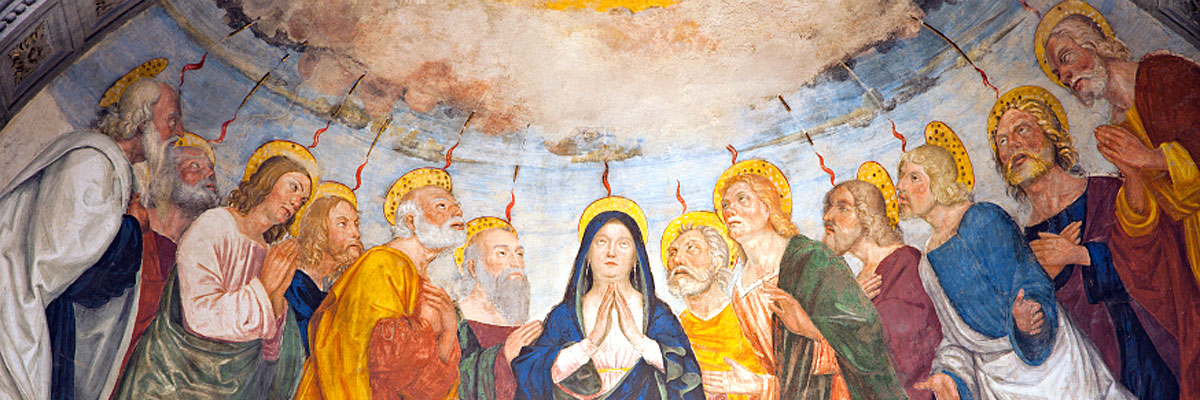
Understanding Our Church
A Treasury of Arkansas Writers Discussing the Catholic Faith
Official Website of the
Catholic Diocese of Little Rock
Celebrations throughout liturgical year reflect course of Christian life
Published: January 31, 2004
By Abbot Jerome Kodell, OSB
Though we hold all the truths of the faith continually and try to live the Gospel life fully every day, we need the special days and seasons of the Church year to remind and renew us in what we profess. The same is true in the secular order, where not every day is Thanksgiving or the Fourth of July, though the realities these holidays celebrate remain constant and unquestioned.
We have just completed the time in the liturgical year when we focus on the part of the Creed which highlights the Advent of the Savior: the coming of Jesus at his birth — “He was born of the Virgin Mary” — and his coming at the end of time — “He will come again in glory to judge the living and the dead.” The emphasis of this whole season in both Church and society in our time is typically on the first coming, the birth in Bethlehem, which can make us overlook the stress the liturgy also puts on the second coming.
First and second comings of Christ are often bound together in the liturgical days of this time as two layers of Advent. Without overlooking the theme of the first coming, I would like to point out how the theme of the second coming also pervades this Church season. From the point of view of the liturgical celebration of Christ’s future coming, the whole period from November to January is concerned with the end of the world.
The Gospel readings for the final Sundays in Ordinary Time are chosen from Jesus’ prophecies about the destruction of Jerusalem and its temple as a backdrop for the theme of the end. This theme continues with the first Sunday of Advent, and soon it is blended with the preparation for the coming of the Messiah in the preaching of John the Baptist.
The goal of preparations for the celebration of the coming of Christ in glory at the end is not Christmas, but Epiphany. Epiphany means appearance, and in the ancient liturgical calendar a main emphasis of the feast was the coming of Christ on the clouds of heaven. Now attention centers mainly on the first appearance of Christ in the world.
Besides the appearance to the Magi from the East representing the whole Gentile world, other themes are the revelation of Jesus’ identity at his baptism and in the change of water to wine at the wedding of Cana. The unfolding of the liturgical year has had various spiritual applications through history. We are heirs to this rich tradition for our own spiritual journey. Our liturgical books begin the year of observance with the First Sunday of Advent and the preparation for the birth of Jesus.
Soon follows his baptism and public ministry, leading to the climax of his passion, death, and resurrection in Lent and Easter. The sending of the spirit at Pentecost is followed by many weeks representing the life of Christ in the Church until we begin again at Advent. In an older pattern, the year is based on the life of the Christian, beginning with the preparation for baptism during Lent, then baptism at the Easter Vigil and initiation into the full life of the Church with confirmation and the Eucharist.
The weeks after Pentecost represent the Christian journey, and the winter months bring the expectation of Christian death and the hope of the coming back of Christ in glory.



